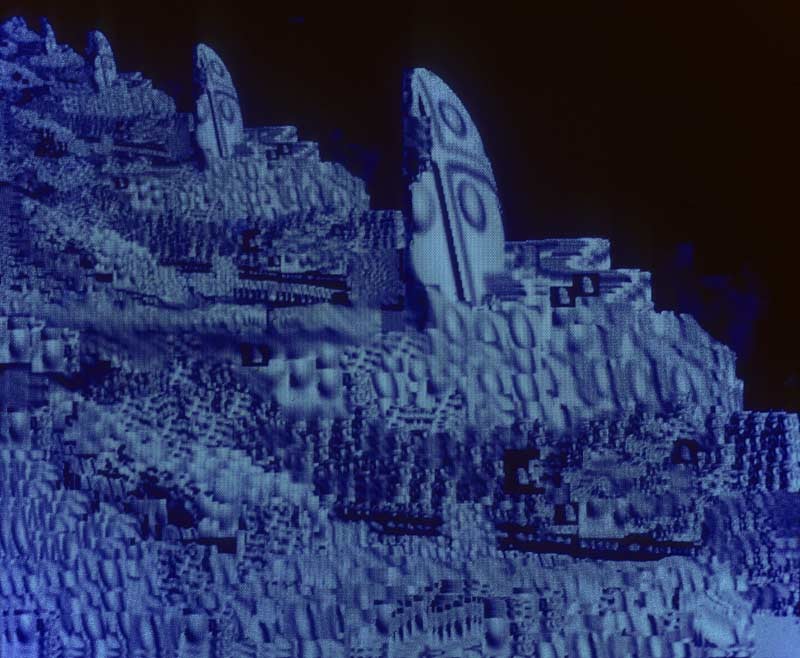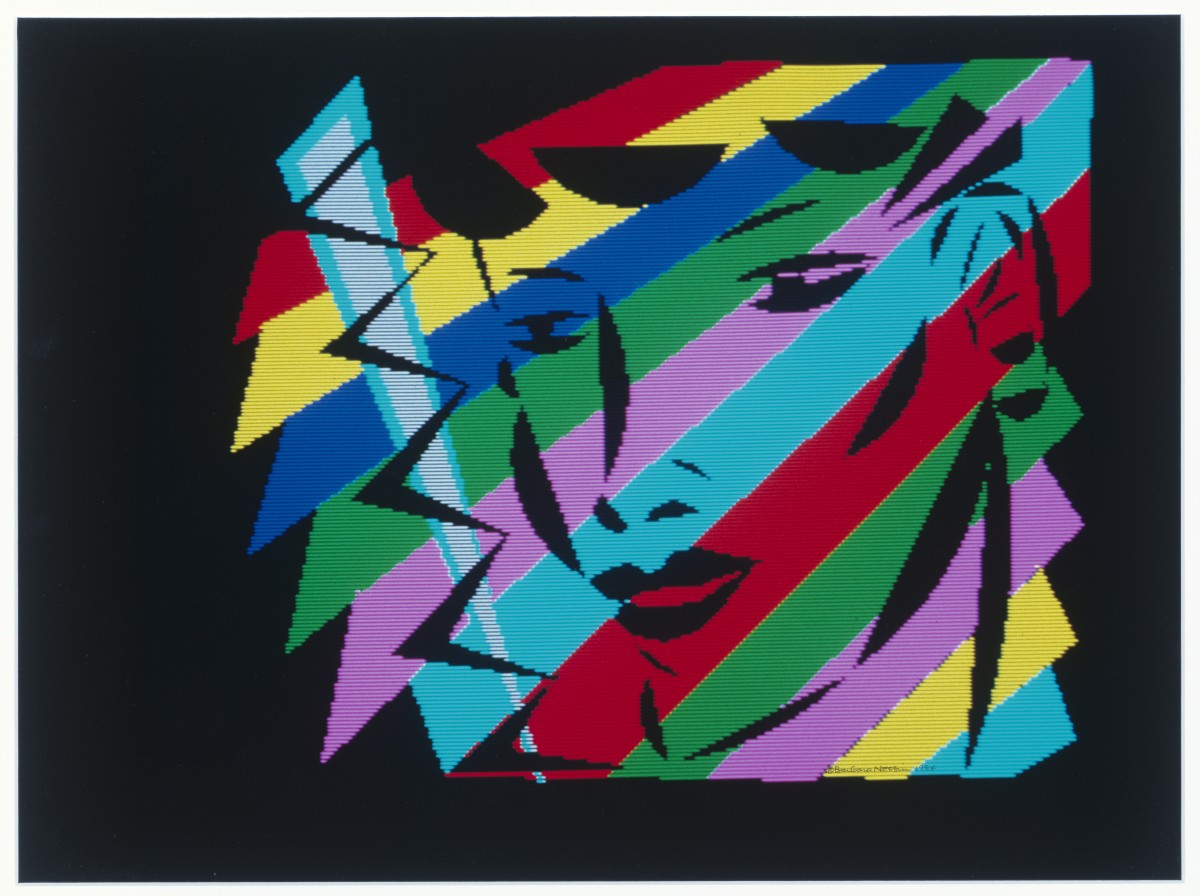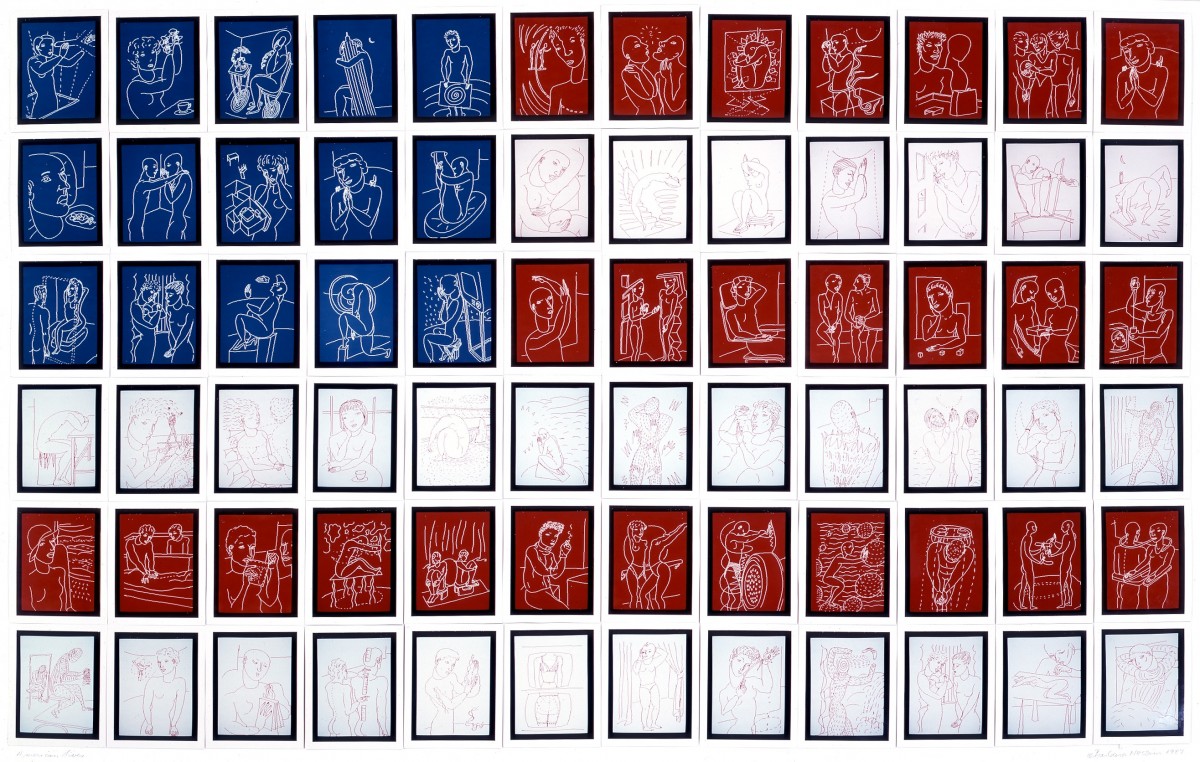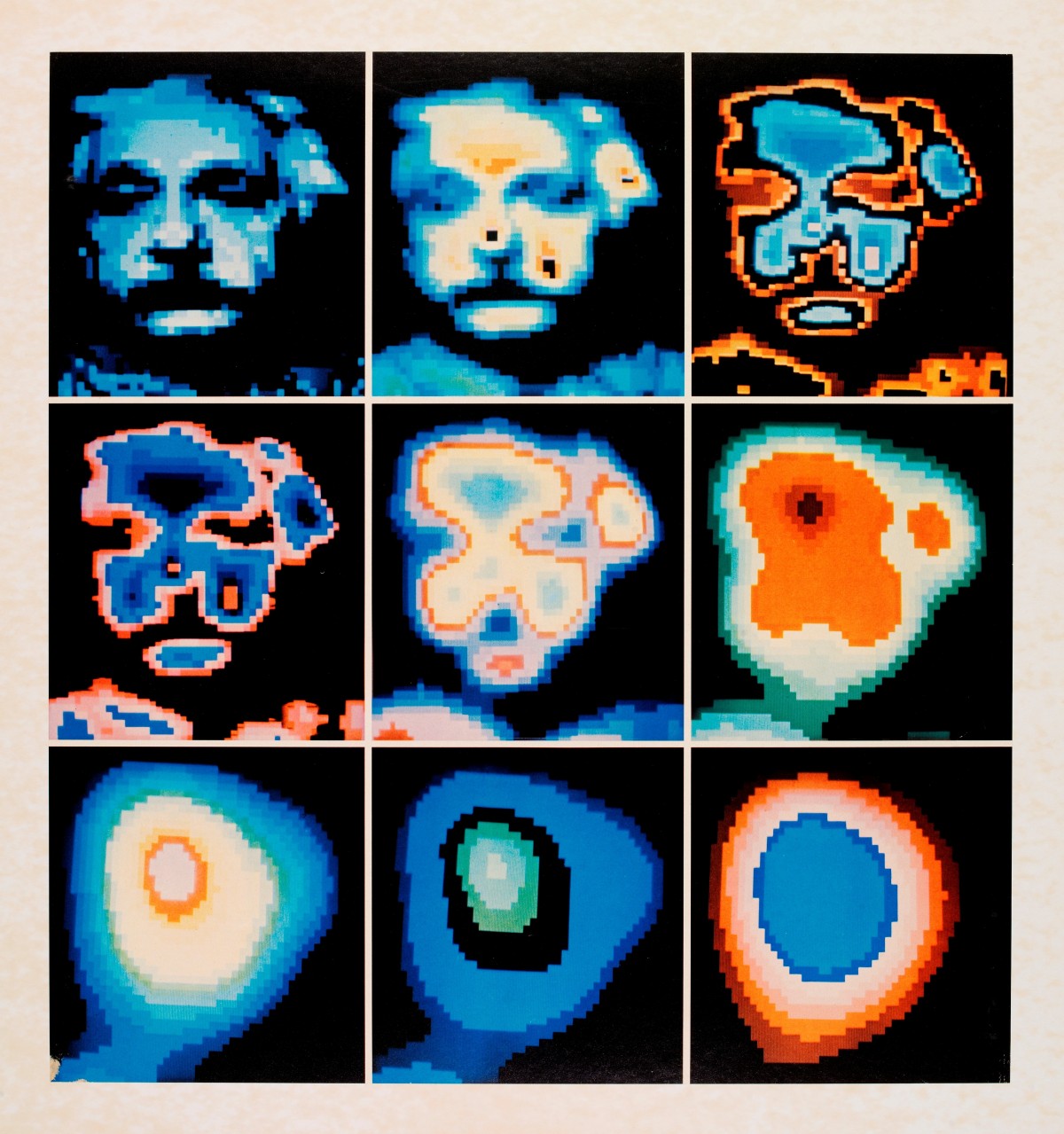If we're already living in a post-digital world, perhaps it’s a good time to consider what came before, and when.
More than fifty years ago, scientists, artists and photographers began to explore the visual possibilities offered by emerging computer technology. Some of them photographed early computer screens, while others scanned original photographs and used them as the basis for digital artworks. In many cases computer-generated designs were output to printers or line plotters, and the original code was discarded. The resulting images were often fugitive, and only survived because they were migrated to other media, including photographs.
One of the forefathers of digital art was Ben Laposky (1914-2000), an American artist and mathematician who photographed the swirling electronic patterns he produced on an oscilloscope screen. Herbert W. Franke also began working with analogue devices in the 1950s, creating abstract forms and sometimes photographing the results. By the late 1960s Franke was working with a variety of mainframe computers to create digital graphics. In 1972 he used early picture processing techniques to digitise a photograph of Albert Einstein and transform it into a series of increasingly abstract images.
In 1966, Ken Knowlton and Leon Harmon scanned a photograph of the contemporary dancer Deborah Hay, and converted the greyscale values into symbols. The twelve-foot-long computer printout they made, Studies in Perception #1, was hung in a colleague’s office at Bell Labs as a prank. Knowlton and Harmon’s image found fame when it featured in a press conference held in the artist Robert Rauschenberg’s loft, and was subsequently exhibited at the Museum of Modern Art, New York.
By the late 1960s, an increasing number of artists were managing to gain access to computer hardware, software and the necessary expertise. In the mid 1970s David Em was the first artist in residence at the Jet Propulsion Lab in California, where scientists were heavily involved in the US space programme. Often working at night, Em was able to explore the capabilities of JPL’s newly installed computer graphics software. Created in 1977, Aku was the first image that he produced there, and it’s also one of the first computer-generated representations of a navigable virtual world. The computer’s screen was photographed to preserve the image, using filters to compensate for the screen’s colour casting. The V&A’s Type R photographic print of Aku is the first that Em made, but has faded since it was first printed. The Museum also has a 20 x 24 inch Polaroid print of the artist’s Approach, produced using an elaborate camera rig that was housed in a hardwood box.
In the early 1980s Barbara Nessim was artist in residence at TIME Inc., where she used their rudimentary videotex system to produce a powerful range of computer-generated images such as Color Veil. The V&A holds large Cibachrome prints of many of the images, which were created using six simple shapes and colours.
Nessim went on to acquire her own computer and explore other ways of getting the images out of the machine. Among other things she produced a series of flags that were made up of smaller Polaroid photos, such as American Lives.
With the advent of personal computers, graphics software became increasingly accessible – for trained artists, and amateurs too. Digital cameras followed, of course, and it’s now difficult to appreciate the sheer effort that went into creating some of the earliest examples of the new medium.
–
Published on 9 September 2013
Commissioned by Photoworks
This post is the second in a series of commissioned articles marking Brighton Digital Festival 2013, each offering a personal response to questions on photography and digital culture.
Check back next week for Thomas Ball who will write about his project Electrosensitive which concerns people affected by Electromagnetic Hypersensitivity.




